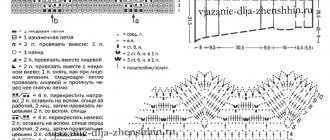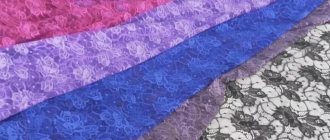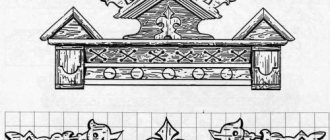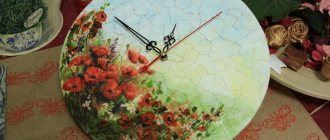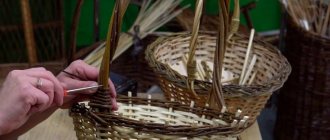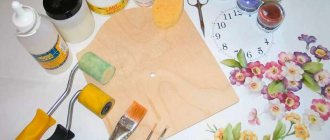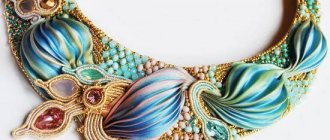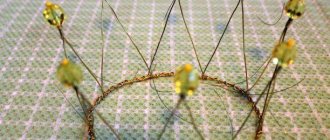History of the hobby
People began to use materials such as stone in the early Paleolithic period. Tools, spears, working and cutting tools were made from durable material. With the development of humanity, people began to study and use other materials: metal, wood, bones. But still, it was not possible to completely oust stone from everyday life. As for hand-made stone carving as a hobby, it is impossible to establish the exact period of its origin. The main centers are China, America, Europe and Russia.
At the beginning of the Middle Ages (5th century), stone was used mainly for temples, treasuries at castles, and in monasteries. In the X-XV centuries. Workshops with artistic stone carving began to appear. They mainly worked to order for aristocrats, merchants and other wealthy gentlemen. This period is also famous for the beginning of the production of Czech mosaics, which have no analogues to this day.
In the 15th century, it gained popularity with the help of decorations, but not simple ones, but church ones. Workshops actively began making souvenirs, beads, amulets, and rosaries from soft materials.
This type of art reached its highest peak of perfection during the Renaissance (XVI-XVII centuries). The first vases, cups, bowls and much more appear.
Peculiarities
By the 19th century, a certain style of Ural stone carving had developed, and a permanent canon for the production of elements in compositions appeared.
For example, leaves and roots were made from serpentine, Zlatoust jasper, ophite, and, less commonly, malachite. Each berry had its own stone:
- black currant - dark agate,
- white currant - rock crystal,
- for the prince - raspberry schorl (tourmaline),
- raspberry - selenite and orlets (rhodonite),
- strawberries and wild strawberries - wax jasper,
- gooseberries - carnelian,
- cloudberry - amber or burnt red coral,
- grapes - amethyst and sometimes smoky quartz;
Raspberries, gooseberries and grapes were made from solid stone, strawberries and wild strawberries too, but with careful cutting of each grain; princely - from small balls connected with mastic, white currant - from two hemispheres glued together with grooves cut out inside.
At the end of the XIX–XX centuries. and the 21st century, one of the most popular stories is the Ural folk tales of P. P. Bazhov. Based on its themes, products are made from malachite using metals (most often gilded bronze) and a scattering of various semi-precious semi-precious stones.
The most popular of them are the Mistress of the Copper Mountain, Danila the Master at work, as well as the so-called stone mountains, which were often made with a turret on top, imitating Fox Mountain in Nizhny Tagil, or Mount Grace in Kushva, or a rock with a rotunda in the village of Kuri and other famous mountains and rocks of the Middle Urals.
Malachite boxes like those from the work “The Mistress of the Copper Mountain” are especially popular.
The article was prepared based on materials: Wikipedia, CC BY-SA 3.0.
Share link:
- Click here to share content on Facebook. (Opens in a new window)
- Click to share on WhatsApp (Opens in new window)
- Click to share on Pinterest (Opens in new window)
- Click to share on Skype (Opens in new window)
- Click to share on Telegram (Opens in new window)
- Click to share on Twitter (Opens in new window)
- Click to share posts on Pocket (Opens in new window)
- Click to share on Reddit (Opens in new window)
- Click to share on LinkedIn (Opens in new window)
- Click to share posts on Tumblr (Opens in new window)
- Send this to a friend (Opens in new window)
- Click to print (Opens in new window)
Where to start
To take the first steps towards learning a new hobby, you should decide on a goal. This will help ease the task of selecting materials and tools for manufacturing. There are several processing options, namely:
- for construction work (grinding and cutting material for cladding, and you can also craft bricks from stone);
- for jewelry (cutting precious stones);
- artistic cutting (figurines, animal figures, bowls, etc.).
Tools needed
There is a classic set of tools for beginners. Stone carving is a very painstaking and difficult hobby. Accordingly, it is better not to skimp on inventory. To get started you will need:
- Hammer.
- Chisel or chisel.
- File.
So that the work does not seem too hard, it is worth purchasing a hammer with two flat surfaces and weighing no more than one kilogram. The chisel should also be flat on both sides and without teeth. At the completion stage, the figure is processed with a file.
Depending on the size of the product, the necessary tool is selected. That is, if you need to work out small details, a small file is suitable. To treat a larger area, use the appropriate size.
Craftsmen also have other tools for stone carving. Everything will depend on your goal. In their work, masons also use:
- sledgehammer (for working with bulky material);
- pickaxe (the main tool for chipping and processing large stones);
- jackhammer (cuts stone);
- chisels of different sizes (for more precise detailing);
- carpenter's hammer (used for laying stone tiles);
- brush (grinds the product);
- scarpel or burins (engraving and inscriptions on stone materials);
- scriber (helps to leave marks or designs on the product);
- cutters (used for polishing figures or for jewelry purposes).
Types of images on stone
Since ancient times, artistic carvings on semi-precious stones have been used. Unique figurines and jewelry made by ancient people from jade, turquoise, etc. have reached us. Carving is no less common in architecture.
Artistic stone products are divided into two types.
- Sculpture. A three-dimensional object, all elements of which can be examined in detail from all sides.
- Relief. This is a three-dimensional drawing that is carved on a stone surface. This type of product is usually used in architecture.
Reliefs also come in different types. This is a bas-relief (shallow image), high relief (almost three-dimensional drawing), incised and picturesque.
Additional tips and safety precautions
When working with any materials, it is always important to think about your health and minimize negative consequences. Even if you are processing small workpieces and using only a couple of tools, you should not neglect safety. To reduce the risk, follow these rules:
- Always wear safety glasses. When working with a hammer and chisel, fragments will break off, which can injure the eyeball.
- Wear a mask or respirator. The workpiece may contain asbestos that is harmful to the body.
- Protect your hands with gloves to avoid calluses and abrasions. The material is often rough with sharp protrusions.
- The tool must be durable and sharp. This will make handling easier and reduce the risk of injury from equipment breaking during work.
Gem carving: the most ancient of arts
The art of carving has been known since ancient times, when it was used to decorate palaces in the ancient cities of Assyria and Egypt, the portal notes. It was used for sculptures, temples and sarcophagi, but not as portable art objects.
The article is based on the research of Yehuda Kassif , curator of the Ramat Gan Diamond Museum. Small carved gemstones became works of art that could be easily worn, transported and displayed. These were known as cameos. Currently, carving on precious stones is widespread in Europe and the Far East, where jadeite is used as the main material. Gemstone carving is an art form whose history goes back thousands of years. It gave birth to small figurines, beads and pieces of jewelry made from expensive materials - precious and semi-precious stones. These small works of art, often depicting historical figures or historical events, were used in place of paintings or prints. Today, paintings and photographs serve the same purpose. Origin of the term "cameo" The word "cameo" ("cameos" in the plural)" is of uncertain origin. It is believed that the words "camaieu" or "camaheu", which appeared in France in the 13th century, have Greek roots and came with the Crusaders returning from the East. The term cameo , used to describe relief carvings on a stone or shell, is often translated into Hebrew as kamiah, a Hebrew word meaning amulet or talisman, which is misleading. Cameo is not necessarily related to the mystical associations of the Hebrew kamiah. Carving Techniques Essentially, a cameo is a two-dimensional sculpture that uses flat colored gemstones from which thin layers are removed, adding depth and perspective to the carving. Figures of people, animals or elements of nature stand out in relief, and the background is made using carvings. The carving shows the natural layers of stone and uses them to create an image and background. This method uses sharp instruments similar to those used by a dentist. Intaglio (intaglio), derived from the Latin word “tagliare” - “to cut” - is also a cameo, but made in a different way. Typically, a clear or translucent stone is used for intaglios. The surfaces of the carvings are smooth, and the figures seem to be reflected in the stone. To achieve this effect, the carving is done from the back side of the stone, the figure itself is cut out, and not the background, as in a cameo. Such a cameo can be viewed from two positions, and then from the smooth side you can see a figure “floating” in the stone. Sometimes paint is used to tint the image. The centuries-old history of stone carving The art of carving has been known since the ancient centuries of human history. Stone carving has been known since the fifth century BC. e., and ancient Babylon is considered the cradle of precious stone carving. In ancient Greece (800 - 500 BC), gem carving flourished mainly on the islands of the Mediterranean. During this period, art reflected humanistic ideals, and carved works of art depicted characters from Greek mythology and elements of nature. In the third century BC. Egyptian artists exerted their influence on the art of carving. They invented new ways of carving: the figure and its parts protruded, and the background was cut out. It was at this time that the first large cameos were created, usually from Indian sardonyx. Carvers especially loved this stone for its vibrant layers, allowing for multi-layered images. This period gave us the cameo of King Ptolemy II, which serves as a turning point in the art of carving. The images on carved gemstones of this period were a combination of Egyptian motifs with Hellenistic artistic orientation, and later with elements of Roman art. During the Roman Empire, carved cameos were considered one of the most important items in Roman treasuries. Ancient Roman cameos continued the artistic traditions of ancient Greek cameos. We know the names of stone carvers of that period - for example, Discorides, a carver at the court of Emperor Augustus (60-14 BC). The art of cameo and intaglio flourished during the Italian Renaissance, when outstanding works of this ancient Greek and Roman art were considered the ideal of beauty. This movement inspired sculptors, painters and carvers to express their art in ways that were known in ancient periods. In the 15th century and early 16th century, cameos were created by such famous artists as Matteo Del Nassro (1515-1547), Valerio Bellelli (1468-1546), Giovanni de Bernardi (1494-1553) and Giovanni delle Carniole. The cameos created by these and other artists of the time are artistic treasures; all of them are recognized as the pinnacle of the art of gemstone carving. The culmination of this period was the work of Anibela Fontanta (1540-1587) and cameos from the workshops of the Serrachio brothers, as well as the Ottavio Mizroni family of Milan, whose works of art and cameos can now be seen in major museums in Europe and the United States. In addition to cameos, Italian Renaissance carvers also made household items from precious stones. Cups and bowls were made from stones such as quartz, amethyst and lapis lazuli. These products impressed the nobility, and they could afford them, like the Medici. The Medici collection contains the famous “Florentine plate”. In the 18th century, a type of carving art became the carving of family coats of arms and heraldic devices. The names of the families who achieved perfection in this matter came from this period: the Fitchler family and such artists as Nutter Hacker and Merchand. It is interesting to note that the famous singer Johann Wolfang von Goethe, whose image was carved as an intaglio by Hacker, became a cameo collector himself. Since the mid-19th century, Paris began to set the tone in art, culture and fashion. Gem carving developed rapidly in the city and attracted many young artists from cities such as Idar and Oberstein in Germany. The most famous of them were Wilhelm Lazer, an artist who made a name for himself as a carver. He came to Paris in 1857 at the age of 14, and his most famous work, the cameo Venus, which he made along with wedding jewelry, is on display in the museum in Idar-Oberstein. Idar-Oberstein School The art of gem carving in Idar-Oberstein was greatly influenced by the growing interest in artistic creations and stone carving. Interest in stone carving has constantly increased in different parts of the world - in Europe, the USA and, since 1975, in Japan. Gem carvers were invited to international exhibitions and took part in them. Modern stone carving reflects the spirit of modernity and gives importance to three-dimensional sculptures, bas-reliefs, realistic depictions of human figures, changes in monochrome images and the development of family crests, as well as relief carving and shading techniques. Gemstone carving students are asked to carve rock quartz bowls, baguettes, and carve other gemstones. Stone carvers who have completed various courses develop their abilities and develop their own style. The rapid development of technical tools that occurred in the 1980s, which threatened to cause overproduction and cheapening of products, did not pose a threat to collectors of gemstone carvings. On the contrary, the development of these technologies became an additional incentive, inspiring artists from Idar-Oberstein to create new works of art. The value of new original works remained and sometimes even increased. Sometimes an “industrial” product introduced a new modern design. Professional competitions and various prizes, including those awarded at the international level, recognize the excellence and high quality that carvers attach great importance to.
Tools
As with any business, a very important element here is the correct choice of materials and tools. For a person doing this for the first time, it will be easier to create on a soft stone. And soapstone fits this description very well. And for greater durability and flexibility of your experiment, it is recommended to use alabaster or building plaster. This way you can spend a minimum of nerves while working and admire the result much longer. Also, gypsum has a whole palette of delicate shades and the sculpture will turn out much more aesthetically pleasing.
Before working, do not forget to check your creation canvas for cracks. The fact is that the stone itself is a very fragile and unpredictable rock - one wrong move, and all your efforts will go down the drain. All flaws can best be seen on a wet stone - so you should wet it thoroughly before working. Size also matters, so learn to immediately choose a stone of the right size.
Now let's move on to the tools themselves. To do this you will need:
- dust mask;
- protective glasses;
- gloves (if you are working with large stones);
- a good jackhammer, chisels and files;
- a little imagination and patience.
DIY stone carving
First you need to come up with what you want to bring to life, namely draw a sketch. Some may find it more helpful to have a small model sculpted from plasticine or clay to get a better idea of the volume. It's important to start with abstract shapes, as fine details will be difficult to show and will only lead to frustration ahead of time.
So, with the hammer in one hand and the chisel in the other, you can begin the process. It is very important to move the tool from the center to the edge - this way you will reduce the likelihood of unnecessary chips . Also, do not forget to work with the chisel not perpendicular to the cracks formed, but parallel. Apply the final touches with a file and polish your statue with sandpaper for a smoother, more natural look.
DIY applications from paper napkins: detailed master classes Flowers made from beads. How to make DIY crafts with children 3 years old
